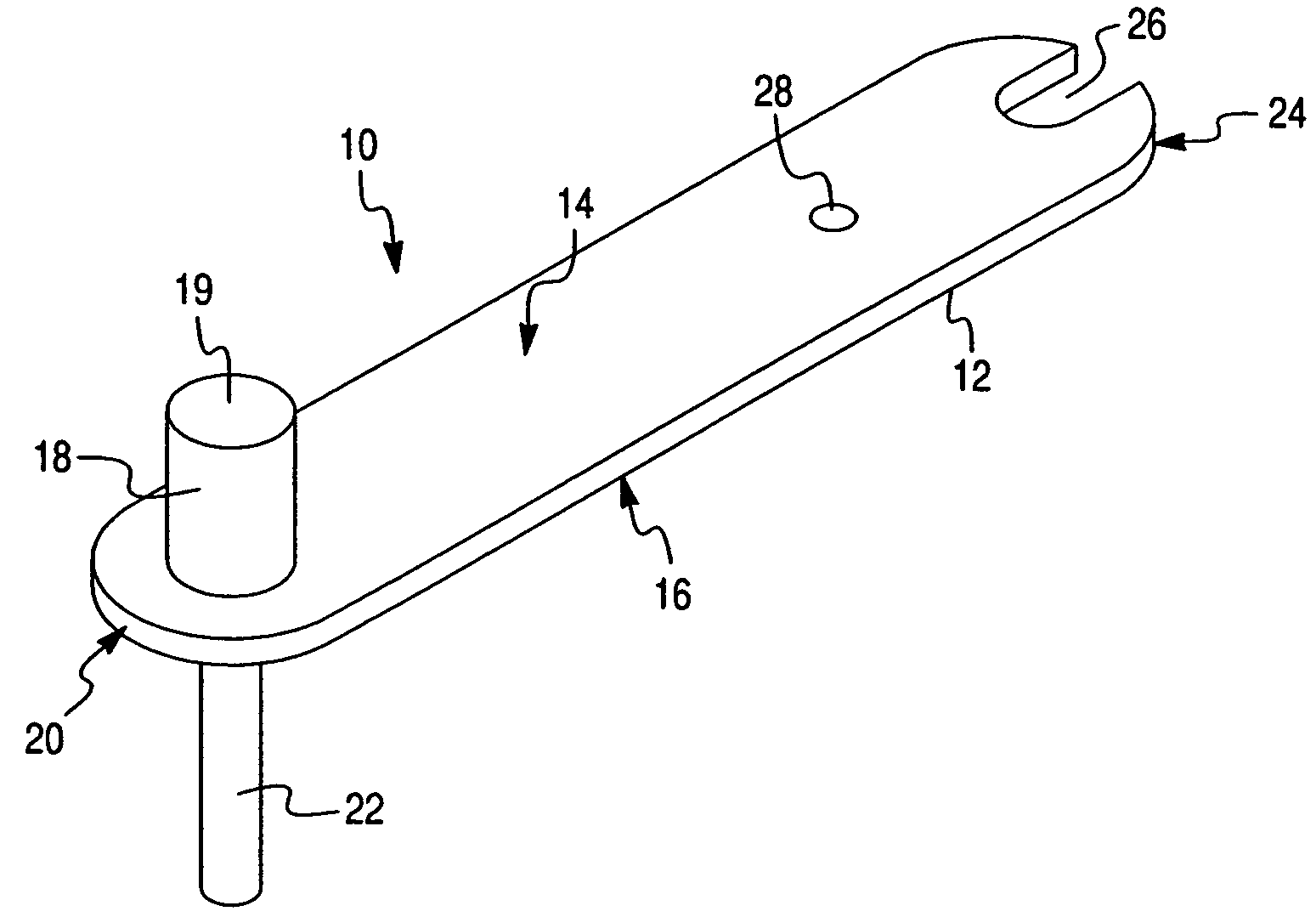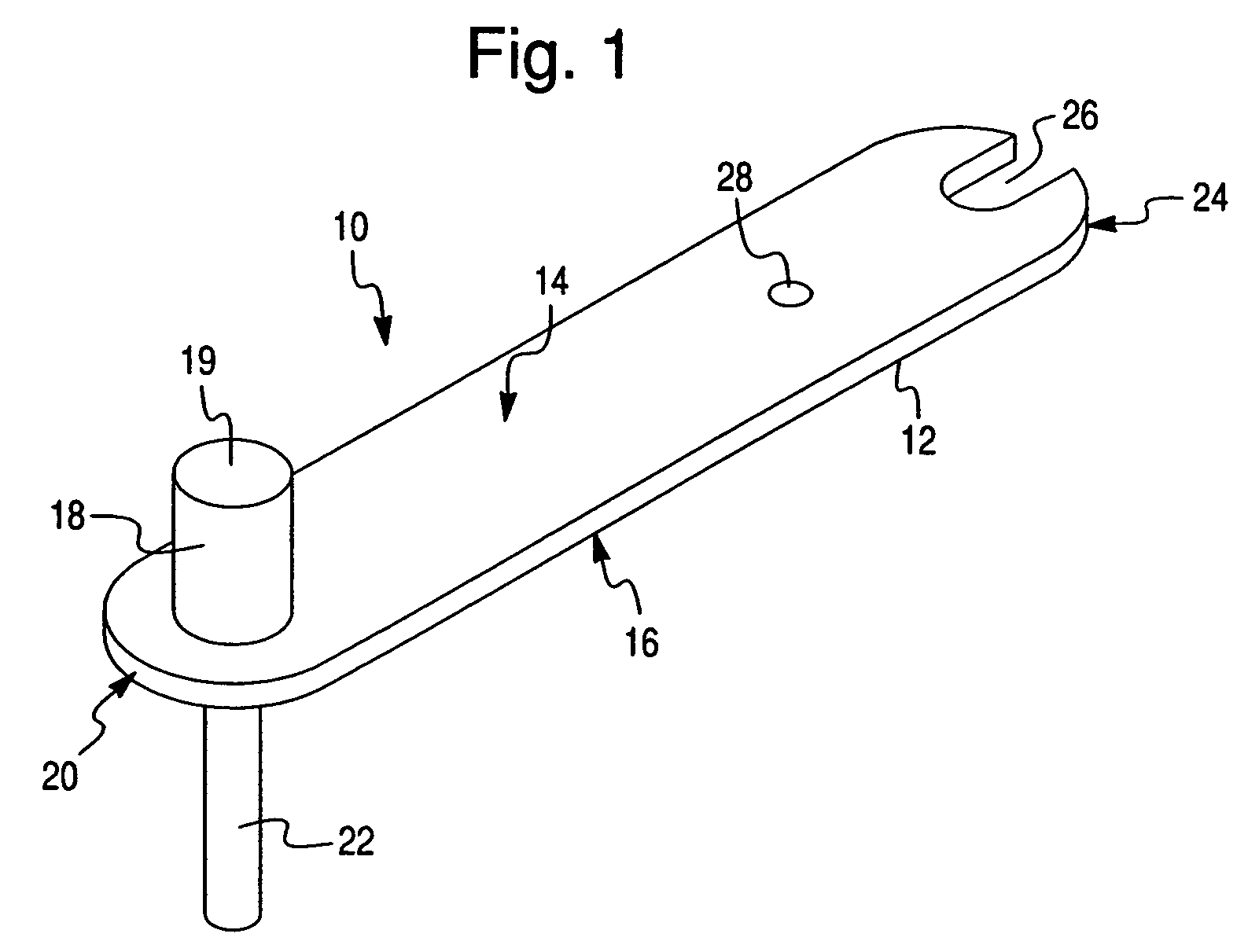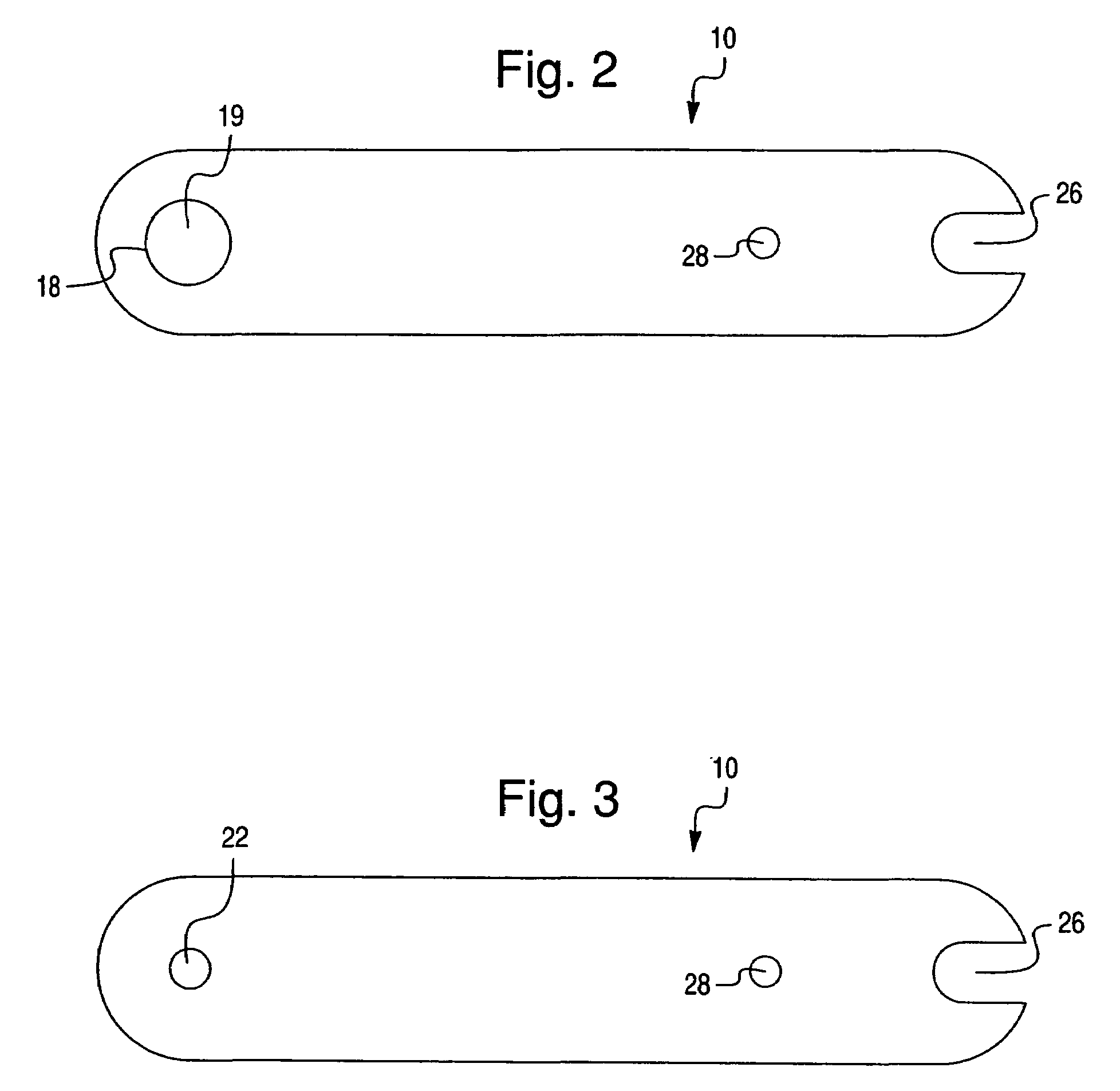Door hinge pin removal tool
a tool and hinge pin technology, applied in the field of multifunctional hand tools, can solve the problems of affecting the use of the tool, so as to reduce the tendency of users, reduce the chance that the tool will skip off the hinge pin and damage the surrounding woodwork
- Summary
- Abstract
- Description
- Claims
- Application Information
AI Technical Summary
Benefits of technology
Problems solved by technology
Method used
Image
Examples
Embodiment Construction
[0022]As best shown in FIGS. 1–7, a first embodiment of the invention comprises a tool 10 with an elongated body 12 having planar upper 14 and lower 16 sides. An elongated cylindrical anvil 18 with a planar striking surface 19 extends from the upper side 14 of tool 10 adjacent to first end 20 of the tool 10. A hinge pin bit 22 extends from the lower side 16 of the tool 10. Preferably, the anvil 18 is coaxially aligned with the bit 22, although it is merely necessary that the anvil 18 and hinge pin bit 22 extend in parallel in order to effect efficient transfer of force applied to anvil 18. The second end 24 of the tool 10 includes a hinge pin extractor slot 26 and a utility aperture 28. The slot 26 may be used to pry out and remove a pintle or hinge pin once the hinge pin bit 22 dislodges the hinge pin from the hinge. The utility aperture 28 can be used to suspend the tool 10 from a support, or as a connection point for a belt clip or carrying lanyard. Ends 24 and 20 are rounded in ...
PUM
| Property | Measurement | Unit |
|---|---|---|
| force | aaaaa | aaaaa |
| diameter | aaaaa | aaaaa |
| elongate shape | aaaaa | aaaaa |
Abstract
Description
Claims
Application Information
 Login to View More
Login to View More - R&D
- Intellectual Property
- Life Sciences
- Materials
- Tech Scout
- Unparalleled Data Quality
- Higher Quality Content
- 60% Fewer Hallucinations
Browse by: Latest US Patents, China's latest patents, Technical Efficacy Thesaurus, Application Domain, Technology Topic, Popular Technical Reports.
© 2025 PatSnap. All rights reserved.Legal|Privacy policy|Modern Slavery Act Transparency Statement|Sitemap|About US| Contact US: help@patsnap.com



